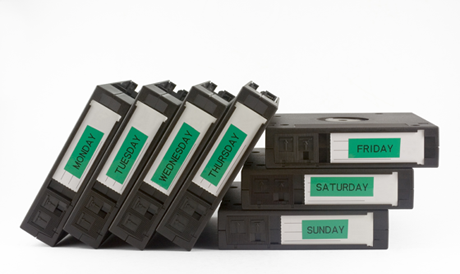
For an increasing number of businesses data is king. Everyone wants to know that their data is secure, safely stored and accessible.
I remember a time when the last thing I’d do before leaving the office at the end of the day was to change the server’s backup tape. And yes, I mean a cassette tape, complete with the day stickered to the side of the cassette. To be honest, this ritual was mostly a pointless exercise. The tapes were stored onsite, in fact right next to the servers they were supposed to be ‘protecting’, and did we ever test our ability to restore a backup or retrieve some specific file? I think that if we ever needed to do a restore we wouldn’t have stood a chance of getting the system back up and running in a timely manner, if at all. Our data was so vulnerable in hindsight that I’ve no idea how our Network Administrator slept at night.
Thankfully this situation, that I fear wasn’t an isolated incident, has become less prevalent and today’s IT professionals make data security, integrity and availability a major priority. Backup services like Asigra enable reliable easy to restore solutions while dedicated connections like ExpressRoute and AWS Direct Connect ensure reliable low latency connections your data in remote secure locations.
So when I read that Microsoft are looking to take these requirements to the next level with Project Natick, I spared a quick thought to those old Monday to Friday backup tapes.
Project Natick sees Microsoft experimenting with underwater data centres. As strange as it sounds (electricity and water come to mind) there are actually some real benefits to having data centres under the sea. For one cooling racks upon racks of servers with traditional air conditioning is not only bad environmentally but a serious expense, and Microsoft believe that underwater servers will help keep the servers cooler with less impact on the environment. Couple that with the ability to place these strategically along coastlines to reduce latency, increase physical access security and even potentially power them using renewable energy sources and Microsoft may be on to a winner. I’m sure there will be plenty of jokes along the lines of will these data centres be more susceptible to phishing attacks, but then who would have thought 10 years ago we would be storing our precious personal and business data in a largely faceless offshore cloud based datacenter?
Now this undersea storage idea may be off in the future or not even get off the ground, but it once again highlights the fact that businesses highly value low latency, reliable and secure connections for their business critical data. I hope this trend continues with Tech companies looking at their products and thinking of creative ways to improve the user experience and surpass the markets expectations, who knows what will be the next idea off the drawing board?